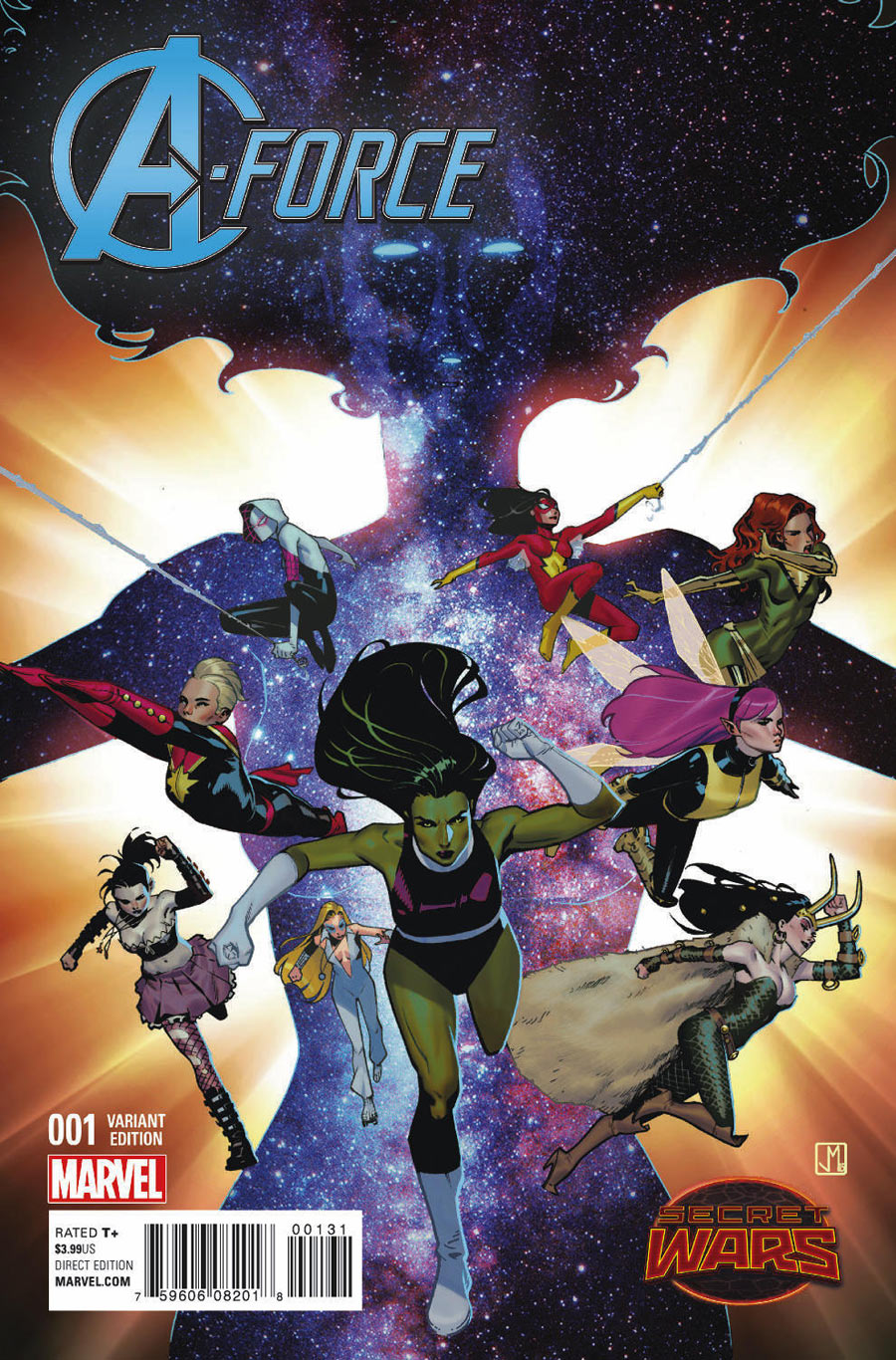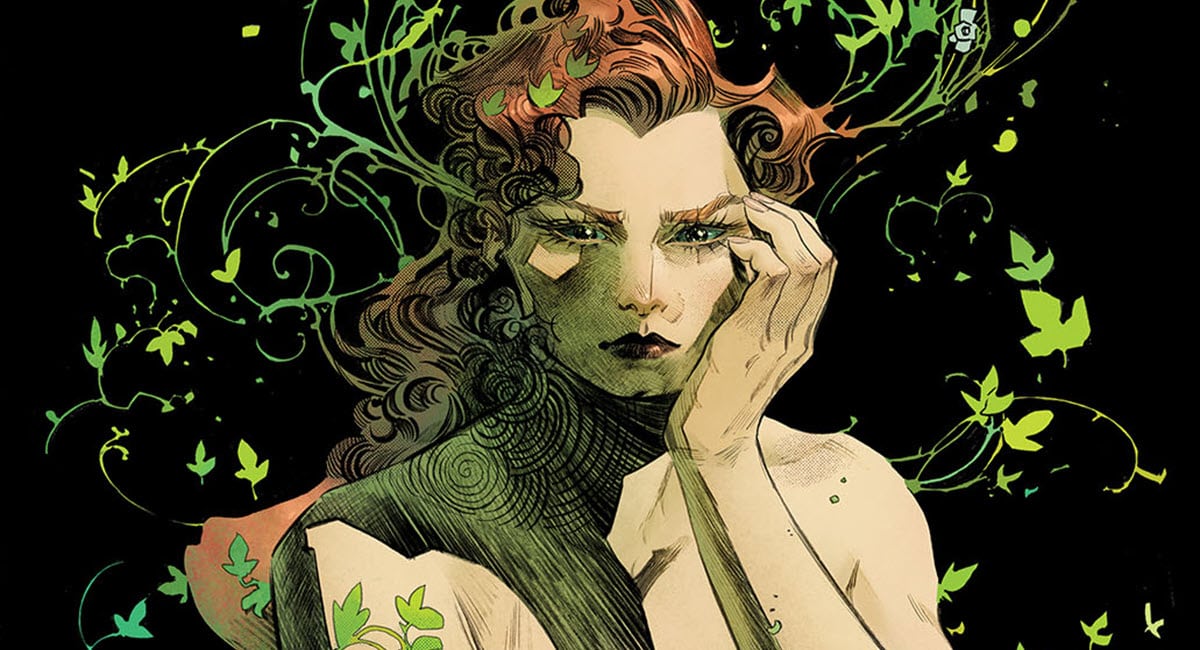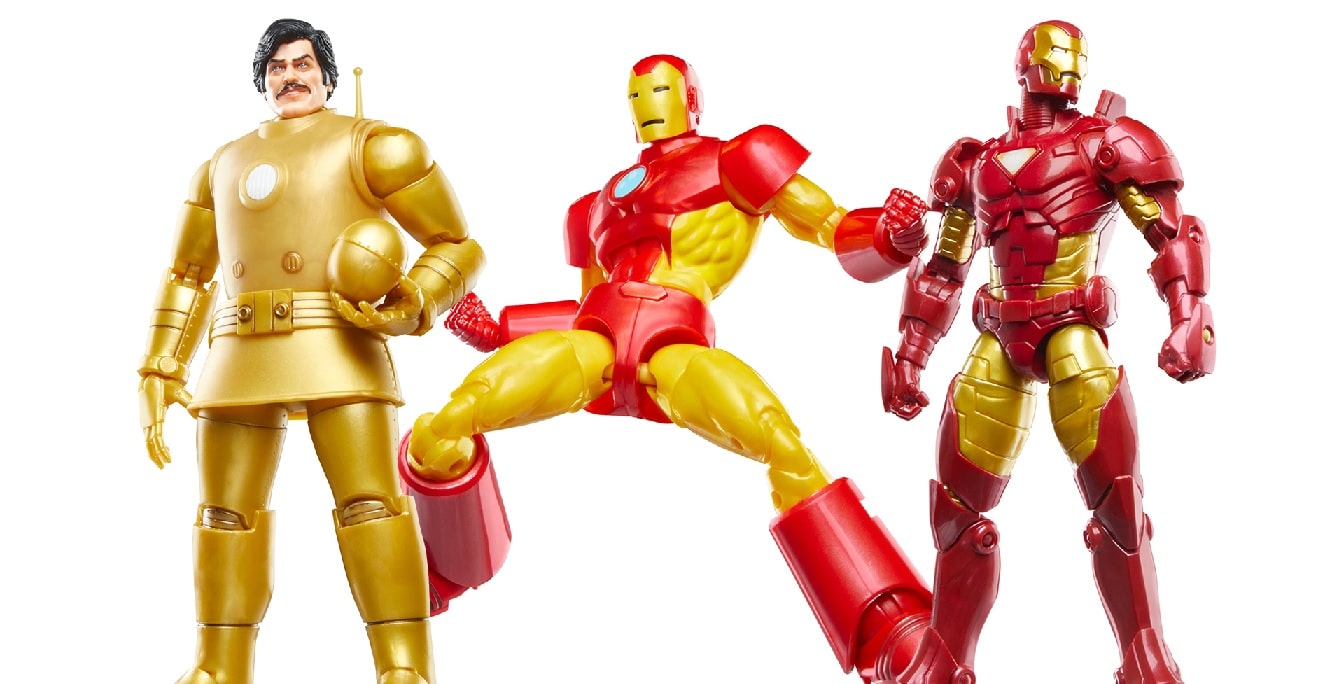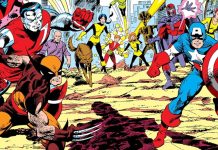
I kind of missed the tidal ebb and flow over Jill Lepore’s analysis of A-Force in the New Yorker while I was at TCAF. I saw it in my feed and figured it would ignite some debate but I was misled by the title on the piece
Looking at Female Superheroes with Ten-Year-Old Boys
as opposed to the internet title of the piece
Why Marvel’s Female Superheroes Look Like Porn Stars
which is a bit more clickbaity.
But what no one seems to have commented on is that MARVEL SENT THE NEW YORKER AN ADVANCE COPY OF A-FORCE! The issue doesn’t go on sale until May 20th, but here it is:
The morning after we saw “Age of Ultron”—a sleepover was involved—Captain Comics and Mr. What? and I read the first issue of “A-Force” at the kitchen table, unheroically, over waffles. I asked the captain to tell me who the women on the cover were: a swarm of female superheroes.
“She-Hulk, Phoenix, Scarlet Witch, Storm, Medusa, Rogue, Wasp, Electra,” he began. “Rescue, Miss—no, Miss Marvel, Black Widow,” he trailed off, vaguely. “I think that’s Dazzler…”
As you probably know, the co-author of the comic, G. Willow Wilson, gave a spirited rebuttal to Lepore’s musings over sueperheroine’s descent from pin-ups of the 30s:
So I was a bit surprised that someone who obviously values rigorous scholarship would analyze the first issue of a crossover event without any apparent knowledge of what a crossover event is, or what the heavily tongue-in-cheek “feminist paradise,” Arcadia, represents in the context of the Secret Wars and the wider Marvel Universe. (Does she know about the zombies? Somebody please tell her about the zombies.) Thus decontextualized, what Dr. Lepore is left with is a cover depicting a bunch of characters about whom she admits to knowing nothing, and one fifth of a story, which is perhaps why her analysis reads as so perplexingly shallow, even snarky.
As sympathetic as I am to Wilson, and supportive of the idea of an all-woman Avengers, there are a few people in the world—mostly history professors at Harvard, like Lepore, I suppose—who don’t know what a crossover event is. They may not even care. Lepore was responding to one set of tropes, while Wilson writes that the comic was created with knowledge of those same tropes:
We, the creators and editors (three women and a gay dude, by the way) are aware that the characters in A FORCE come from a bewildering mashup of genres and mythologies and time periods. That’s the whole point. A FORCE comes out of a very specific conversation about gender in comics that has been evolving rapidly in the past few years, driven as much by fandom as it is by creators and editors. Across the industry, we have been systematically un-fridging (I’ll let Dr. Lepore google that one) female characters who may have gotten short shrift in the past, looking at their backstories, and discovering, as a community, what has been left unsaid. And in A FORCE, we’ve put them all together–for the first time.
I was frankly, more interested in the story suggested by the visible title, examining just how tweener boys, the traditional audience for superheroes, actually respond to female characters, a reaction seemingly at the root of the dearth of Black Widow and Gamora merchandise, as well as the male audience that many observers to comics still presume. Lepore did quiz her kids a bit, but didn’t dig in:
“All the girls here have, like, gigantic cleavages,” Captain Comics said, giggling.
“Why do they have gigantic cleavages?” I asked. Did it seem inevitable to these little boys, I wondered, that women would be drawn this way?
“Because they’re girls, Mom,” Mr. What? said. “What else is going to happen?” And he laughed, because it was funny, and he knew I would find that funny—the idea that nothing else was possible—the way it’s funny when Jessica Rabbit says, “I’m not bad. I’m just drawn that way.” Alas, the Avengers are not funny, and neither are the She-Avengers.
I’d also like to draw attention to another rebuttal that Wilson linked to that hasn’t gotten as much attention, written by Leia Calderon, a member of the retail group the Valkyries:
Perhaps you were concerned with how much of female superheroes are drawn for the male gaze, which is a completely valid concern. Let’s talk about how to fix that. How do we reclaim She-Hulk from the fantasies of teenage boys, if that’s all a grown woman like yourself sees when she opens A-Force? I pictured She-Hulk as she is and turned an imaginary boob-dial in my head to reduce her cup-size… and my stomach churned. It felt like body-shaming a powerful character that I adore, and would adore no less if she had a different figure than the one she’s had for almost 25 years. I understand your superficial criticism, but not your implied solution.
Obviously, there are some deep cultural forces at play here, and one would hope that A-Force will be able to transcend them. I guess I’ll have to wait until May 20th like everyone except the Lepore household to find out.









That’s a really funny observation about the advance copy thing. As someone who writes about comics for a mainstream online publication, Marvel is the only comics publisher that doesn’t send me anything in advance. They’re notoriously stingy about that stuff.
I enjoyed Wilson’s rebuttal but she almost lost me with her lengthy opening argument that in order to understand the context of a first issue of a comic, you need to know all about the crossover event it is spawned from. This is a losing argument that comic readers and professionals alike often can’t step outside of and see for what it is. Comics like this just don’t make sense to anyone that isn’t willing to immerse themselves in the years of stories that have come before it.
Shooter’s Dictum:
Every issue of a title is somebody’s FIRST issue of a title.
I do read every issue that DC Comics sends me, and even then, I forget what’s been happening from the previous issue. (Like “Superman’s Joker” in the Superman/Batman comic, or the overall storyline of Batman: Eternal.)
I read Secret Wars #0 as part of FCBD, but it didn’t really explain anything, or excite me enough to read the event.
@Rich – except nobody is suggesting that you have to immerse yourself in “years” of stories to understand A-Force. Only one mini series that is being published at the same time, which this is a tie-in with.
@Glenn – Yes, except that one mini-series starts by basically continuing a story that has been running in two separate Avengers comics for like 40 issues each. And that’s not counting the various threads being pulled from comics even older than that.
Actually, if Marvel sent the *New Yorker*–or, more likely, “The Secret History of Wonder Woman” author Jill Lepore personally–an advance copy of *A-Force* with that particular variant cover, Lepore’s cleavage/”porn star”-fixated response makes a bit more sense, at least in regard to how Nico Minoru, Loki (female version), and possibly Dazzler are drawn. Of course, when I saw Lepore interviewed on C-Span’s Book TV a few months ago, I got the distinct impression that she hadn’t bothered to do any research at all about what happened to Wonder Woman after the William Moulton Marston era. So if she’d never actually looked at any superheroine comics drawn by anyone more influenced by pin-uppy good girl (or bad girl) art than by the rather woodenly old-fashioned stylings of original Wonder Woman artist H.G. Peter, I suppose even the relatively fully-clothed, arms folded, “heroically posed” portrayal of the A-Force heroines shown on the non-variant *A-Force* #1 cover image that accompanied the digital version of Lepore’s article might come as a bit of a shock.
This problem is hardly specific to comics. Its in television, movies, advertising, you name it.
I don’t think I realized normal looking people had sex until I started reading Will Eisner.
Well, *I* was certainly shocked by the fact that Marvel sent someone an advance copy for review, as it was my understanding that they pretty much don’t do that. I wonder Lepore’s reaction/review will reinforce their policy of not doing that, or if all of this attention is worth it, no matter what Lepore might have said–Like, surely Lepore’s piece drew more attention to the book to people who had never heard of it than it would have convinced people planning on buying it to drop it.
“A FORCE comes out of a very specific conversation about gender in comics that has been evolving rapidly in the past few years, driven as much by fandom as it is by creators and editors.”
Geez, does every comic have to be a “cause” comic? Can’t we just tell a grand adventure story? Sure it’s fun to see the left eating itself, but give me a group of female superheroines fighting bad guys rather than some doctoral thesis about gender roles in modern society. I’m sure Dr. Lepore is not aware that Marvel is in the process of de-sexualizing all of their characters after the Manara Spider-Woman debacle. No curves, covered head to toe in burkas. The A-Force cover is somewhat of an exception–it has the majority of characters covered head to toe, but does show some cleavage on a few others. What, women don’t have boobs? I’m sure they’ll all be perfect, self-actualized feminists with no desire for boyfriends/husbands to make up for it. Fandom is clamoring for this, remember? It was a very specific conversation.
Comments are closed.